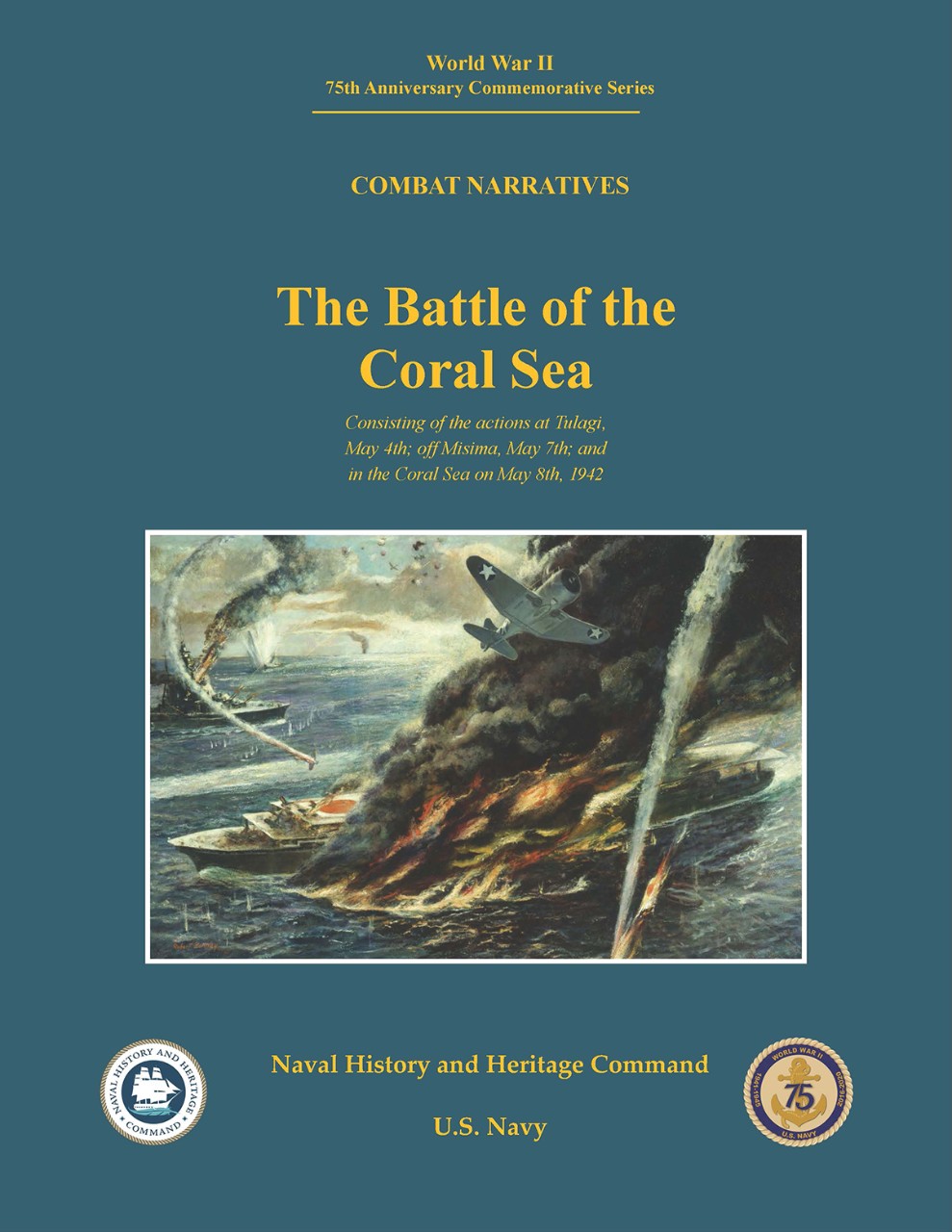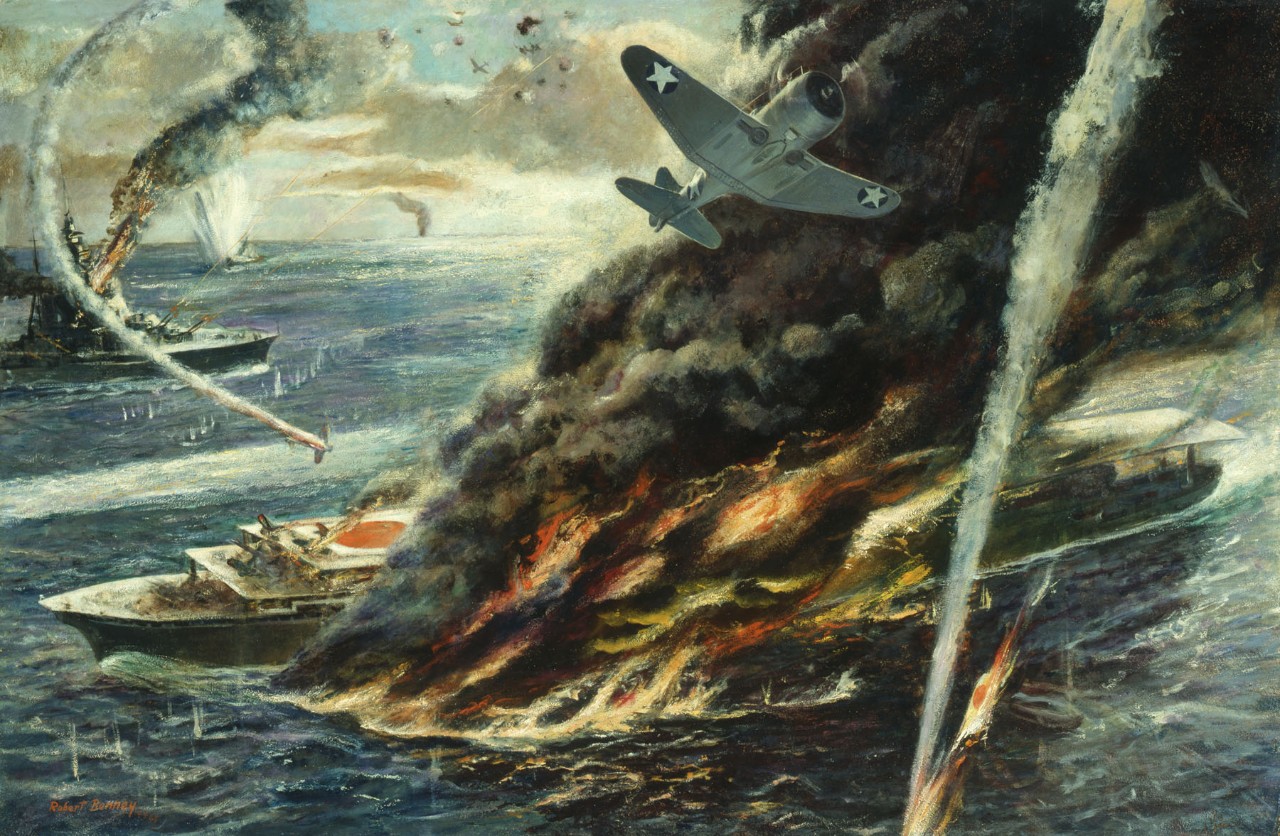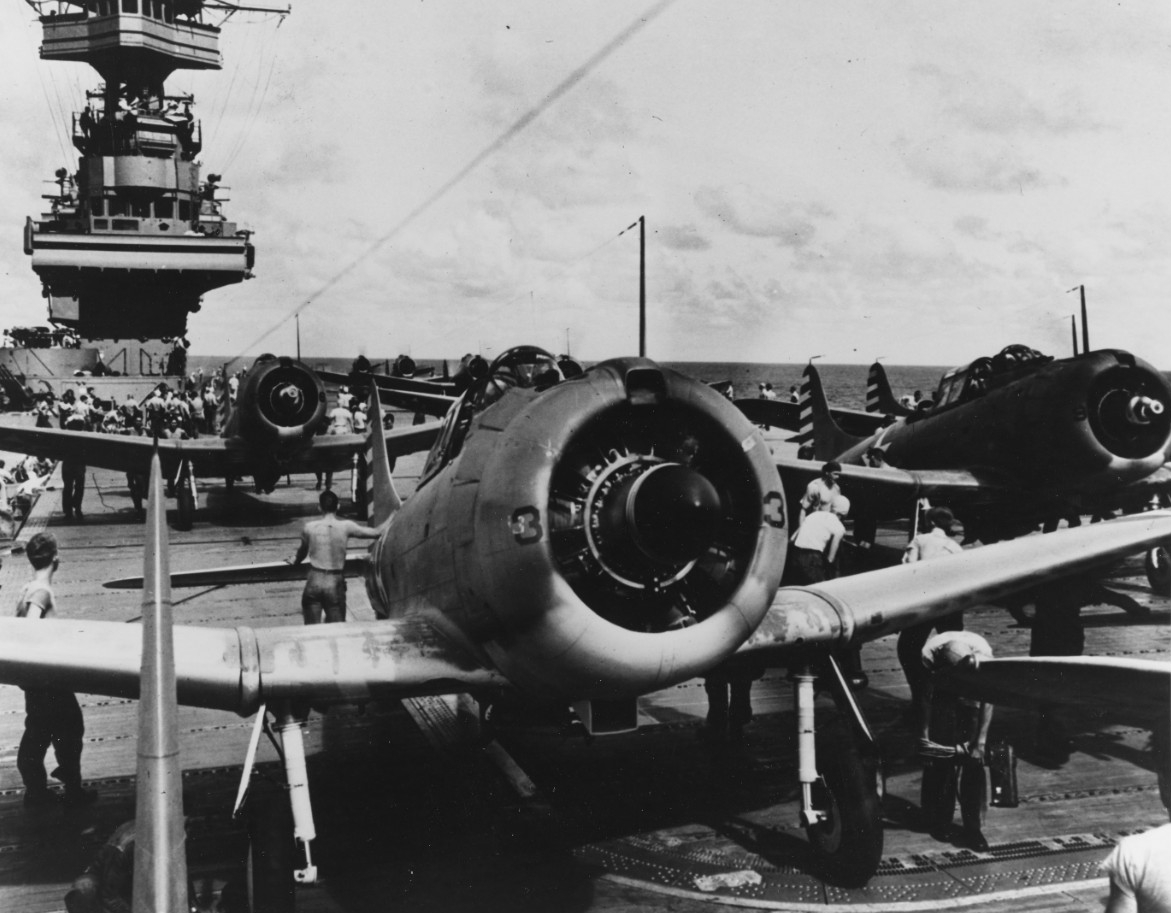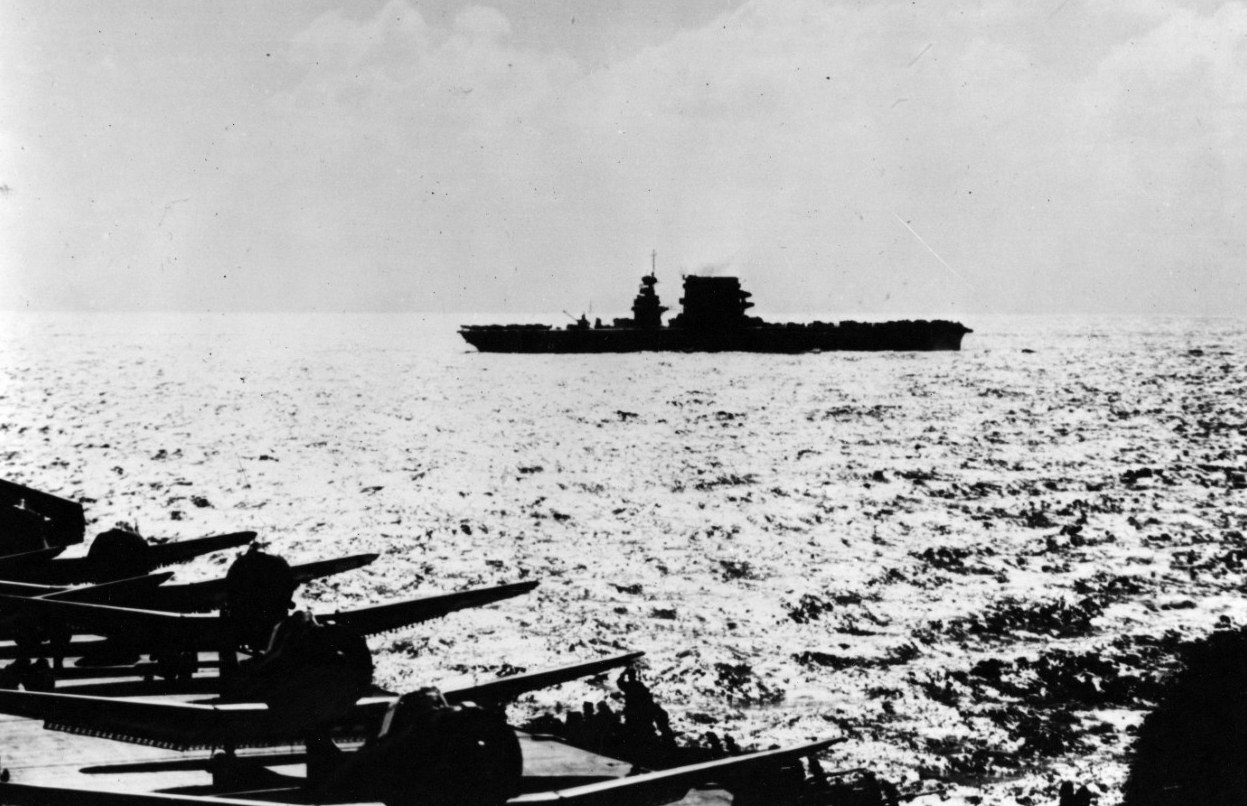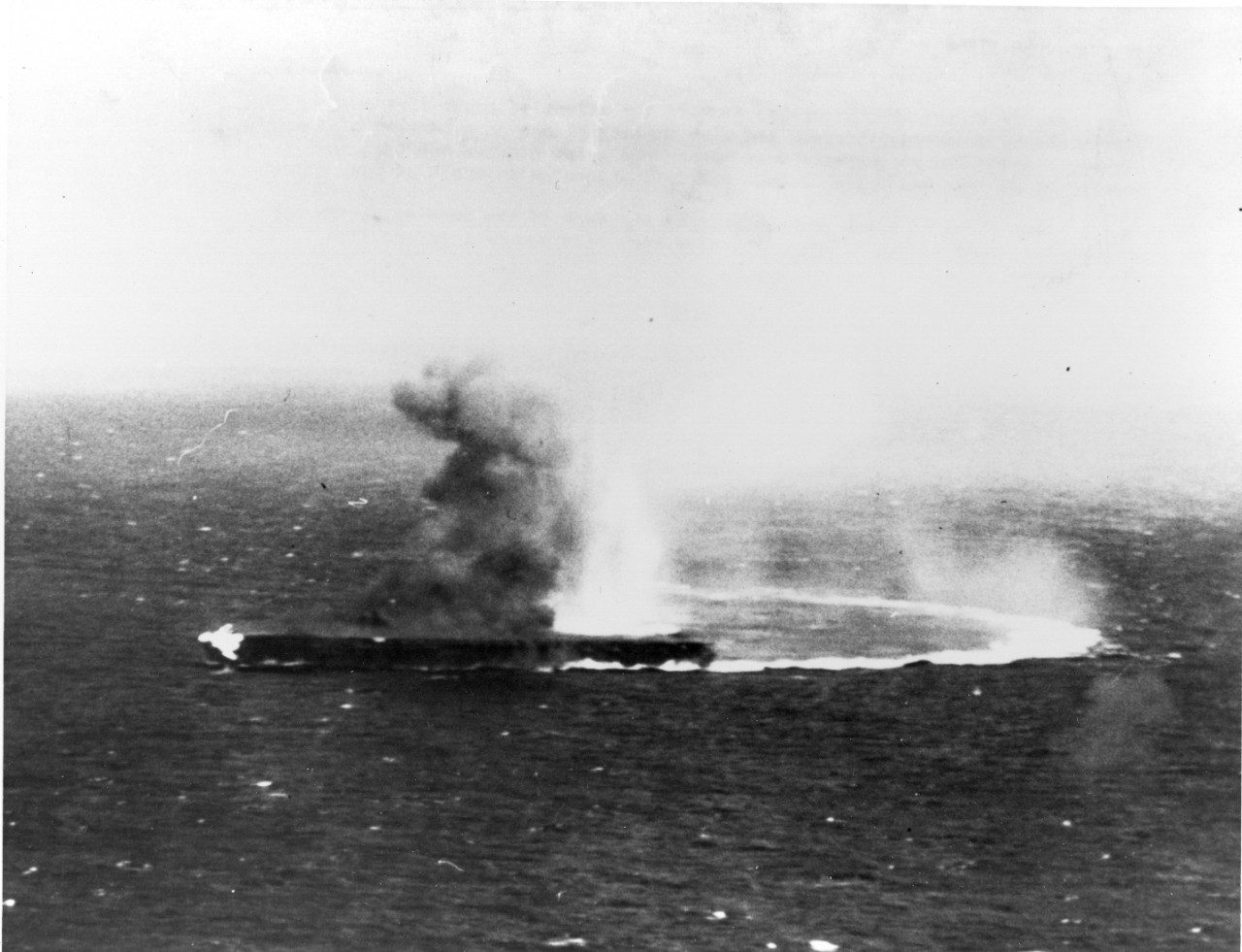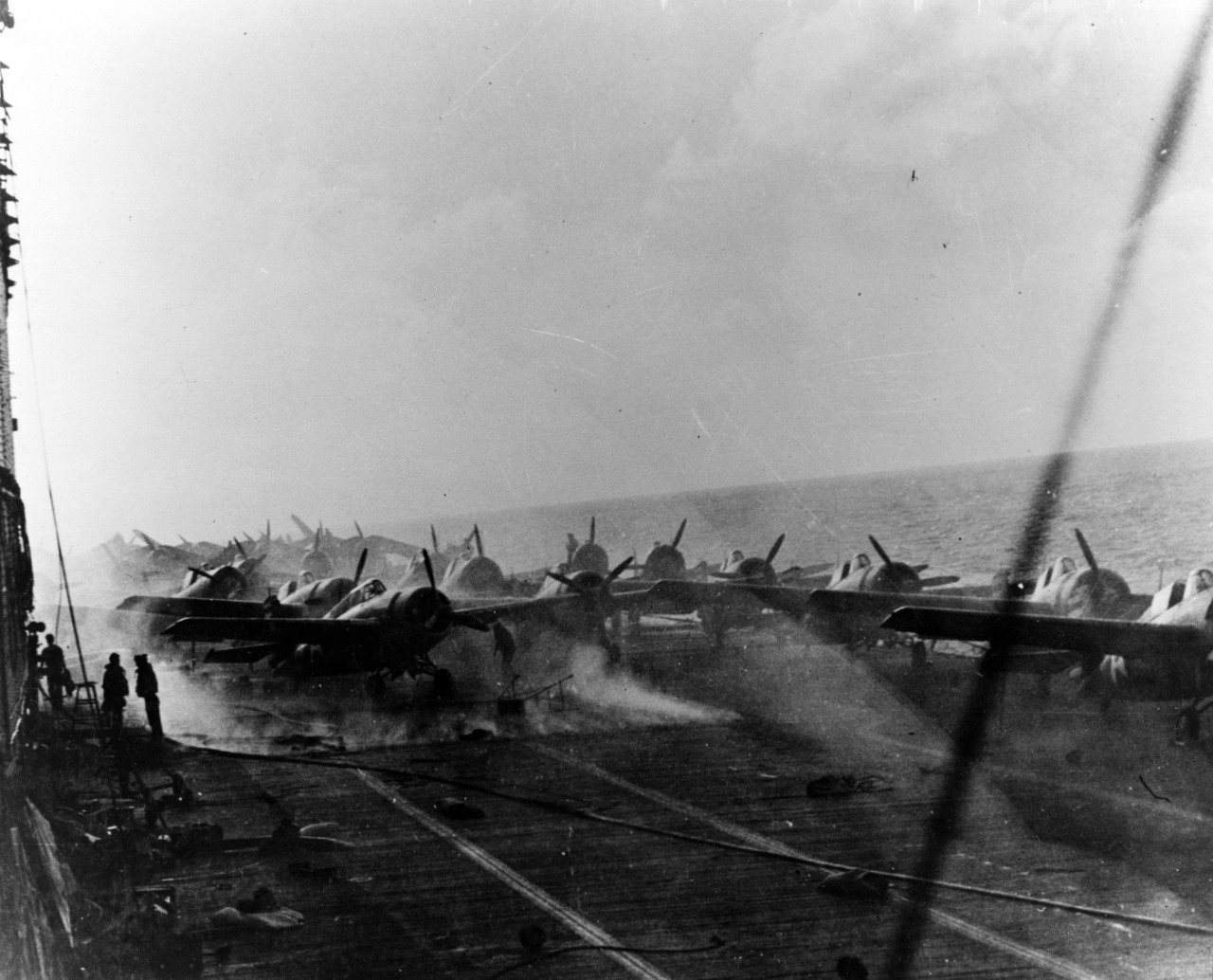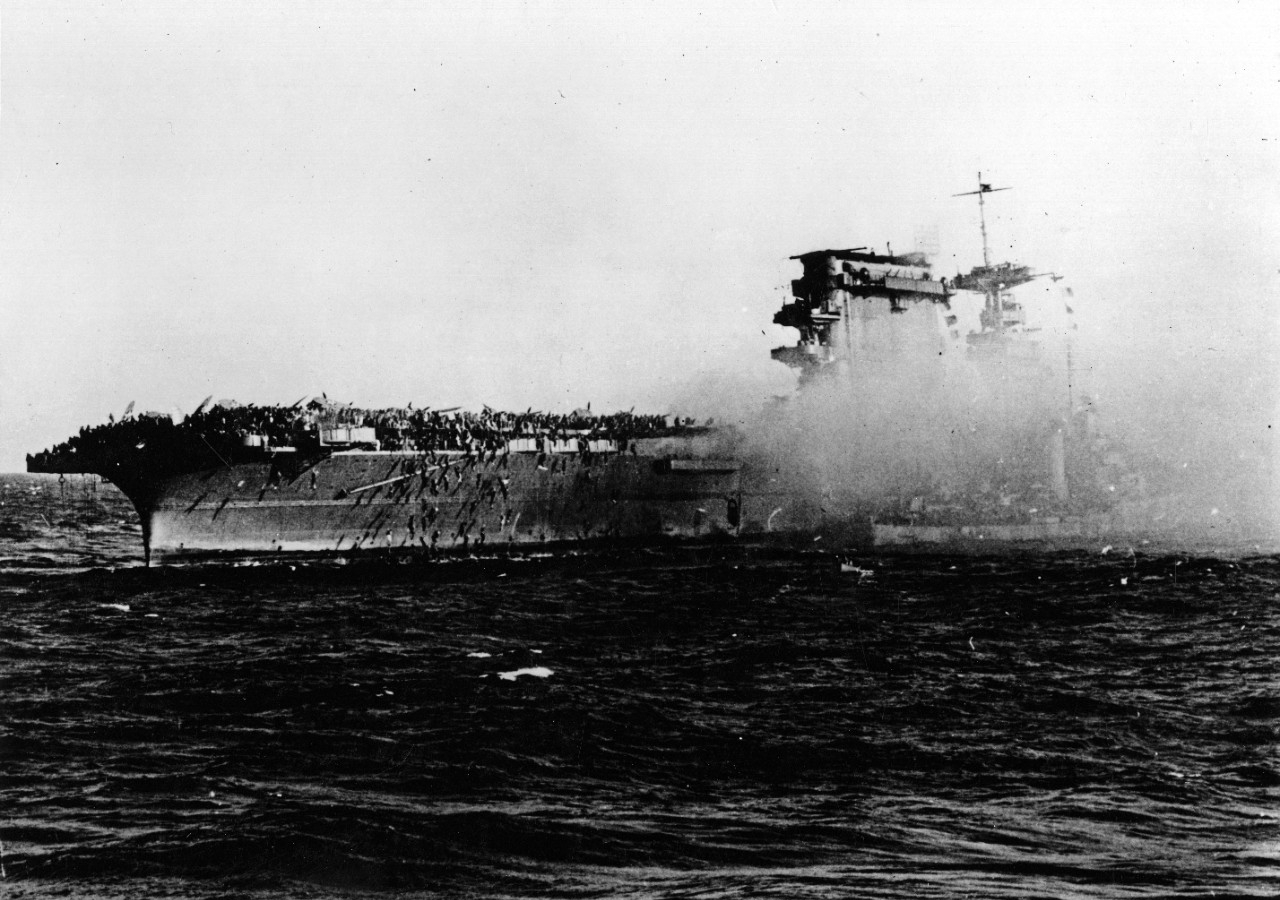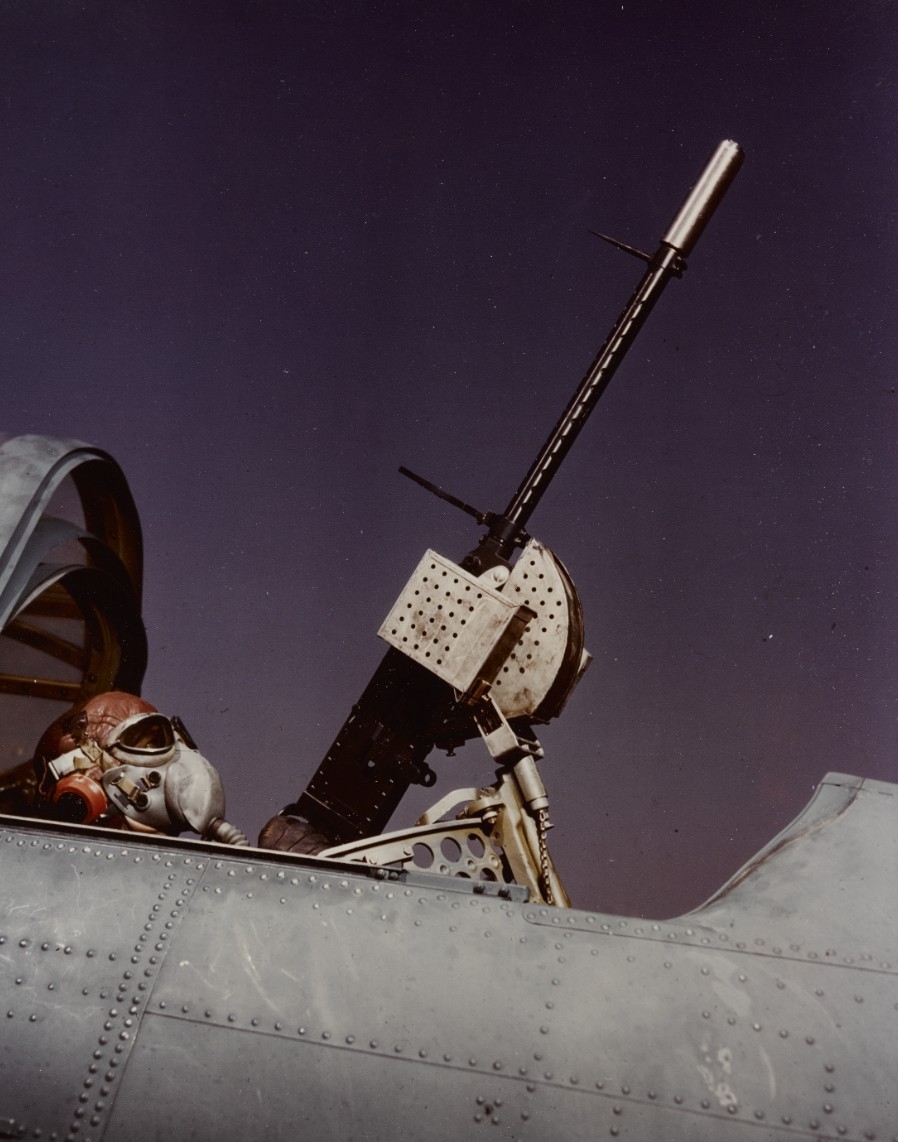Battle of the Coral Sea
29 April–8 May 1942
The Battle of the Coral Sea was the first time since the Japanese attack on Pearl Harbor that the enemy’s seemingly relentless advance into the Pacific was checked. It was also the first major U.S. Navy fleet action against Japan and the first naval engagement in history in which the participating ships never sighted or fired directly at each other.
- Learn about American and Australian Cooperation in the Battle of the Coral Sea.
- Watch original World War II flm footage of the Battle of Coral Sea on NHHC's YouTube channel.
- Download an infographic with highlights from the first air-sea battle in history.
- Learn about The End of the Beginning of the War in the Pacific on NHHC's blog The Sextant.
- Read commentary from NHHC Director Sam Cox in H-Gram 005: Battle of the Coral Sea, issued April 2017.
- Read the combat narrative (PDF, 3.4 MB), republished in 2017 by NHHC with a new introduction in observance of the 75th anniversary of the battle. The formerly classified combat narrative was originally published by the Office of Naval Intelligence (ONI) in January 1943; an HTML reproduction of the text is available in the Online Reading Room.
The battle’s strategic background was set by the Japanese plan formulated in early 1942 that saw the country’s forces advance south and southeastward from the Bismarcks and Solomons, with the capture of Tulagi in the Solomons and Port Moresby, New Guinea, as immediate objectives. Secondary objectives were the central Pacific island of Nauru and Ocean (Banaba), in the Gilberts chain northeast of the Solomons, for their phosphate resources, essential for Japanese agriculture.
Over 29 April–4 May, Japanese forces successfully attacked, invaded, and occupied Tulagi, although several of their warships were surprised and sunk or damaged by aircraft from USS Yorktown (CV-5). Alerted to the presence of U.S. carriers, the Japanese Carrier Strike Force advanced toward the Coral Sea with the intention of finding and destroying the Allied naval forces. Beginning on 7 May, the two sides exchanged air strikes over two consecutive days.
The resulting maneuvers and clashes between two U.S. Navy task forces and a combined U.S.Australian cruiser force with the Japanese Carrier Strike Force and supporting units resulted in a Japanese tactical victory. The Japanese Imperial Navy sank USS Lexington (CV-2), USS Sims (DD-409), and USS Neosho (AO-23), and damaged Yorktown. The Japanese only lost one small carrier (Shoho) and suffered damage to a fleet carrier (Shokaku). Allied forces were forced to withdraw from the operational area. However, with their air groups too battered to support a further advance, the Japanese were brought to a standstill. Although the Japanese had managed to capture Tulagi, Port Moresby remained in Allied control. Shokaku had been hit so severely that she could not join the Midway force. Due to losses of pilots and planes, another carrier (Zuikaku) also did not take part in that operation. Thus, Coral Sea reduced Japanese carriers available for Midway by a third. Eminent U.S. Navy historian Samuel Eliot Morison notes that “so many mistakes were made by both sides in this new mode of fighting that it might be called the Battle of Errors; but more were made by the enemy, and he failed to profit by them.”
Four Medals of Honor were awarded at Coral Sea:
- Lieutenant John J. Powers (Yorktown, VB-5) for actions while attacking Shoho on 7 May at Tulagi, and on 8 May in while attacking Shokaku (killed in action)
- Lieutenant Milton E. Ricketts (Yorktown), engineering repair party, on 8 May (killed in action)
- Lieutenant William E. Hall (Lexington, VS-2) for his attack on Shoho on 7 May and interception of Japanese torpedo planes (too few available fighter aircraft forced the use of dive/scout bombers as low-level interceptors) on 8 May (survived)
- Chief Water Tender Oscar V. Peterson (Neosho) for his heroism in the ship's engineering spaces on 7 May (died of wounds)
Additional links of interest:
- Navy Department Communiques and Pertinent Press Releases, May 1942
- Preliminary USS Lexington damage and loss-in-action report, June 1942
- A Priceless Advantage: U.S. Navy Communications Intelligence and
the Battles of the Coral Sea, Midway, and the Aleutians - List of U.S., Japanese, and Australian ships at the Battle of the Coral Sea
- Extensive chronological photo coverage of the Battle of the Coral Sea in the NHHC collection
- Vignette: "Lieutenant Junior Grade Lawrence F. Steffenhagen and Shōhō"
- NHHC publication: Winning a Future War—War Gaming and Victory in the Pacific War, by Norman Friedman. This acclaimed book shows how U.S. naval commanders successfully applied lessons learned from interwar war gaming to victorious carrier operations in World War II.
Significant commanders:
- Fleet Admiral Chester W. Nimitz, USN
- Admiral Frank J. Fletcher, USN
- Vice Admiral Sir John G. Crace, RAN
- Admiral Isoroku Yamamoto, IJN
Two noteworthy entries in The Sextant, the NHHC blog:
- On Course to Midway: The Battle of the Coral Sea
- Battle of the Coral Sea: Toughness in Battle Forges Committed Partners
- The End of the Beginning of the War in the Pacific – The Battle of the Coral Sea
- Battle of the Coral Sea and the Bomb that Changed the Course of the War
- The Battle of The Coral Sea’s 75th Anniversary: Intelligence Lessons for Today
Sources:
Robert J. Cressman, The Official Chronology of the U.S. Navy in World War II. Annapolis, MD/Washington, DC: Naval Institute Press/Naval Historical Center, 1999.
Samuel Eliot Morison, History of United States Naval Operations in World War II, Vol. IV—Coral Sea, Midway and Submarine Actions, May 1942–August 1942. Boston: Little, Brown and Company, 1950.

